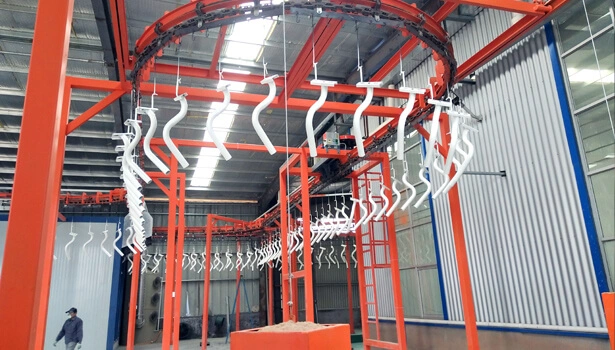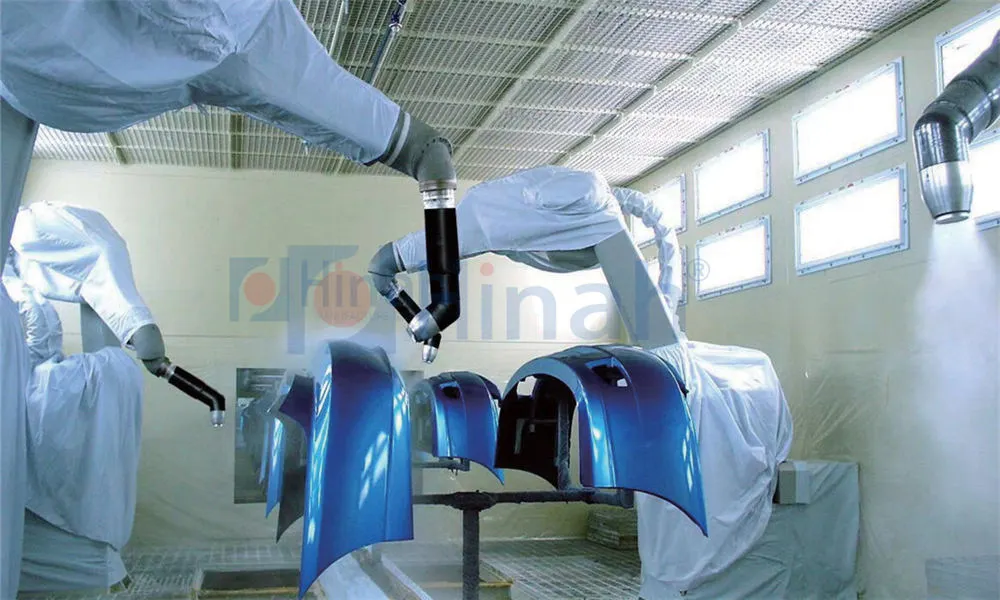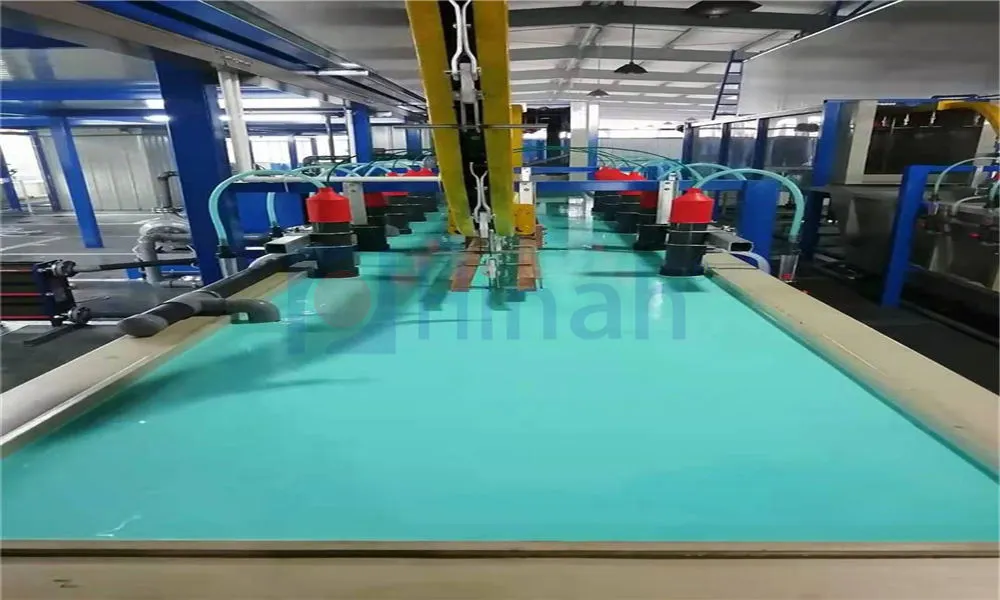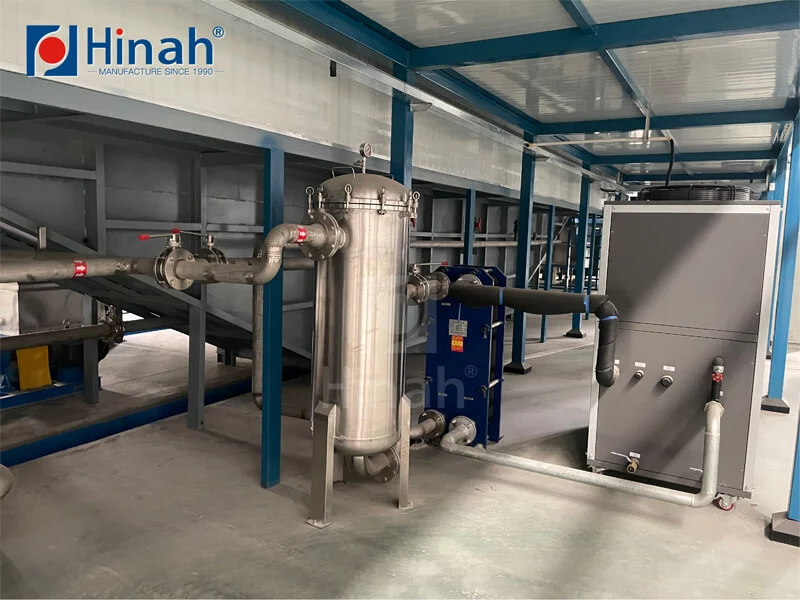If you're still relying on manual powder coating processes, you're likely facing inconsistent finishes, high material waste, and difficulty finding skilled labor. The industrial coating landscape is rapidly evolving, and automated solutions are no longer a luxury but a necessity for staying competitive. Powder coating robots have emerged as a transformative technology, delivering unprecedented levels of efficiency, quality, and return on investment. From automotive giants to specialized metal fabricators, businesses are leveraging this automation to gain a significant edge. This article delves into the seven most impactful benefits of integrating a robotic system into your powder coating operation, and how a partner like HANNA can guide you through a successful transition.

Introduction: The Automated Revolution in Powder Coating
Powder coating is a superior finishing method known for its durability, environmental friendliness, and excellent finish quality. However, the manual application process is fraught with challenges, including human error, inconsistent film thickness, and high overspray. This is where powder coating robots come in. These are sophisticated, multi-axis industrial robots equipped with specialized applicators and integrated with advanced control software. They are programmed to follow complex paths with extreme precision, ensuring every nook and cranny of a part receives a uniform coating. As we move further into 2024, the adoption of this technology is becoming a key differentiator for modern manufacturing facilities aiming for lean operations and supreme quality.
Benefit 1: Unmatched Consistency and Superior Finish Quality
The most immediate and noticeable benefit of using powder coating robots is the dramatic improvement in finish consistency. Human operators, no matter how skilled, are subject to fatigue, variations in movement speed, and slight changes in gun angle and distance. These minor inconsistencies lead to issues like orange peel, thin spots, or runs.
A robotic system eliminates this variability. Once programmed with the optimal path, speed, and parameters, a powder coating robot will replicate the exact same motion thousands of times without deviation. This results in a perfectly uniform film thickness across every single part in a production batch. For industries with stringent cosmetic and protective requirements, such as automotive or high-end appliance manufacturing, this level of quality is non-negotiable. Companies like HANNA often provide custom powder coating robot cells that are fine-tuned for specific part geometries, ensuring that complex shapes receive an even coat from every necessary angle.
Benefit 2: Dramatic Reduction in Material Consumption and Waste
Overspray is a major cost driver and environmental concern in manual powder coating operations. It's estimated that manual application can have a transfer efficiency as low as 30-60%, meaning a significant portion of expensive powder coating material ends up in the reclaim system or as waste.
Powder coating robots are designed for maximum transfer efficiency, often achieving rates of 95% or higher. Their precision ensures that the spray is directed only at the part itself, with minimal overspray. Furthermore, intelligent software can control the gun triggering (on/off) so that the robot only sprays when it is directly aimed at the part, saving even more material. This reduction in waste not only lowers your material costs but also reduces the burden on your powder recovery system and minimizes disposal costs. The ROI from material savings alone can often justify the investment in a robotic automation system over a surprisingly short period.
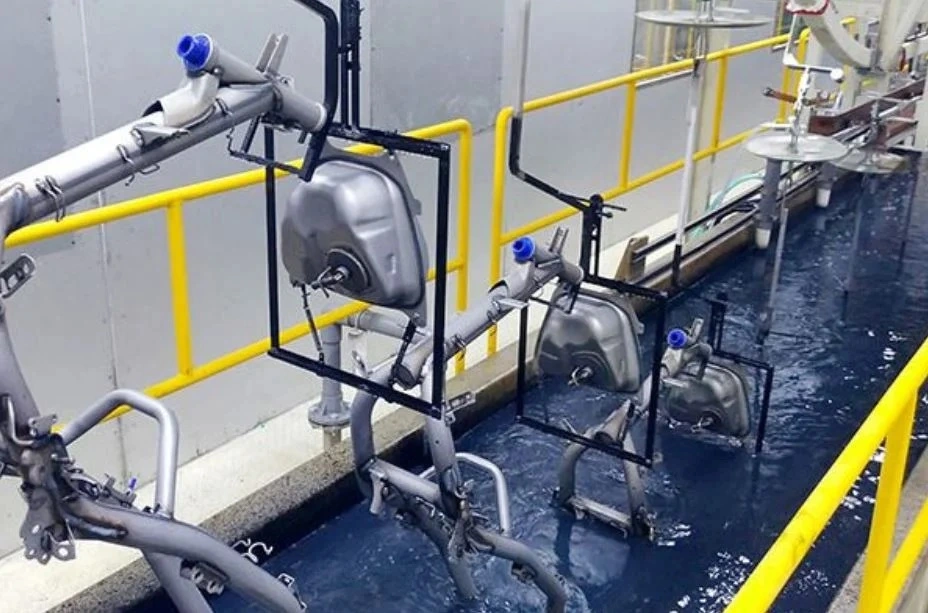
Benefit 3: Significant Increase in Production Line Throughput
Speed is a critical factor in high-volume manufacturing. Manual coating processes are inherently limited by human physical constraints. Powder coating robots, however, can operate at much higher speeds while maintaining quality. They can also work continuously, 24/7, with minimal downtime for breaks or shift changes.
By integrating powder coating robots into your line, you can significantly increase your overall throughput. Robots can handle the coating of multiple parts in a single cycle or work in tandem on a synchronized conveyor line. This accelerated pace allows you to meet tighter deadlines, take on more orders, and grow your business without a proportional increase in labor costs. When planning a system with a supplier like HANNA, throughput analysis is a key part of the design process to ensure the custom powder coating robot solution meets your specific production targets.
Benefit 4: Enhanced Worker Safety and Improved Working Conditions
Powder coating, while cleaner than liquid painting, still presents occupational hazards. Operators are exposed to airborne powder particles, which, while not typically toxic, can be a respiratory irritant. They also work in close proximity to high-voltage equipment used in the electrostatic application process.
Deploying powder coating robots allows you to remove human operators from these potentially hazardous environments. The robotic cell can be fully enclosed with safety interlocks, protecting workers from direct exposure. This not only helps companies comply with stringent OSHA and international safety regulations but also creates a much better working environment. Employees can be upskilled to more rewarding roles, such as robot programming, supervision, and quality control, leading to higher job satisfaction and reduced turnover.
Benefit 5: Unlocking the Ability to Coat Complex Geometries
Many products have complex, three-dimensional geometries with hard-to-reach areas like deep recesses, internal channels, or tight corners. Manually coating these parts consistently is incredibly difficult and often requires multiple passes or rotations, which is time-consuming and prone to error.
Modern powder coating robots, typically 6-axis articulated arm models, possess the dexterity to maneuver around these complex parts with ease. They can be programmed to approach the part from any angle, ensuring complete coverage in even the most challenging areas. This capability is crucial for industries like aerospace, architectural aluminum, and heavy machinery, where part complexity is a given. For such applications, a custom powder coating robot workstation from HANNA would include specialized tooling and programming to handle these intricate coating tasks flawlessly.
Benefit 6: Seamless Integration and Data-Driven Process Control
In the era of Industry 4.0, data is king. Modern powder coating robots are not isolated machines; they are intelligent nodes on a networked production floor. They can be fully integrated with your plant's Manufacturing Execution System (MES) or ERP software.
This connectivity enables real-time monitoring and data collection on key performance indicators like cycle times, material usage, and gun voltage/current. You can track the coating status of every part, generate detailed reports, and identify potential bottlenecks. This data-driven approach allows for predictive maintenance, reducing unplanned downtime, and continuous process optimization. Choosing a supplier like HANNA, which understands the importance of integration, ensures your new powder coating robot will be a future-proof asset that contributes to a smarter, more connected factory.
Benefit 7: Long-Term Cost Savings and Strong Return on Investment (ROI)
While the initial capital expenditure for a robotic system is significant, it's essential to view it as a long-term investment. The combined effect of all the previous benefits—material savings, increased throughput, reduced labor costs, lower waste disposal fees, and minimized rework—adds up to a compelling financial case.
A comprehensive ROI analysis for a powder coating robot installation typically accounts for:
Reduced operational labor costs.
Savings on powder coating material.
Increased revenue from higher production capacity.
Lower costs for masking and rework.
Reduced energy consumption from shorter cure cycles in associated ovens.
Most businesses find that their powder coating robot system pays for itself within 1 to 3 years, after which it continues to generate substantial cost savings and profit for the company.
Choosing the Right Partner: Why HANNA is a Leader in Coating Automation
Implementing a robotic powder coating system is a major project that requires expert guidance. It's not just about purchasing a robot; it's about designing a complete solution that includes integration, safety guarding, tooling, programming, and support. This is where an experienced partner like HANNA proves invaluable. With deep expertise in the international powder coating field, HANNA specializes in delivering custom powder coating robot solutions that are tailored to your specific parts, production goals, and facility constraints. From initial consultation to installation, training, and ongoing service, a strong partner ensures a smooth transition and maximizes the success of your automation investment.
The evidence is clear: the benefits of integrating powder coating robots into your manufacturing process are substantial and multifaceted. From achieving a flawless finish on every part to realizing significant operational savings and enhancing workplace safety, automation is the definitive path forward for the powder coating industry. As technology continues to advance, with improvements in machine vision and AI, the capabilities of these systems will only grow. By partnering with a trusted expert like HANNA, you can confidently navigate this transition and equip your business for a more efficient, profitable, and sustainable future.
Frequently Asked Questions (FAQs)
Q1: What is the typical payback period for an investment in powder coating robots?
A1: The payback period can vary based on application volume and specific operational savings, but most facilities see a return on investment within 1 to 3 years. This is achieved through dramatic reductions in material waste, lower labor costs, and increased production throughput.
Q2: Can powder coating robots handle a high-mix, low-volume production environment?
A2: Absolutely. Modern powder coating robots excel in flexible manufacturing. With offline programming software and quick-change tooling, a robot can be rapidly reprogrammed and reconfigured to switch between different part numbers, making them ideal for high-mix environments.
Q3: How difficult is it to program and maintain a powder coating robot?
A3: While sophisticated, modern robot interfaces are increasingly user-friendly. Many suppliers, including HANNA, provide comprehensive training for your maintenance and programming staff. Additionally, remote monitoring and support services are often available to assist with troubleshooting and minimize downtime.
Q4: Are there custom solutions for coating very large or unusually shaped parts?
A4: Yes, this is a key area of specialization. Providers like HANNA engineer custom powder coating robot solutions for unique challenges. This can include robots mounted on tracks (gantry or linear rails) to coat very large objects like wind turbine blades or vehicle frames, ensuring complete and consistent coverage.
Q5: How do powder coating robots integrate with existing conveyor systems and ovens?
A5: Seamless integration is a critical part of the system design. Experienced integrators will design the robotic cell to work in harmony with your existing conveyor speed, oven entry/exit, and part loading/unloading processes. The robot's controller communicates with the line's PLC to ensure synchronized operation for a smooth, continuous flow.
This article was brought to you by HANNA, your trusted partner in industrial coating automation. For over two decades, we have helped manufacturers worldwide enhance their finish quality and operational efficiency with tailored robotic solutions. Contact our automation specialists today to schedule a consultation and see what a custom powder coating robot system can do for your bottom line.



